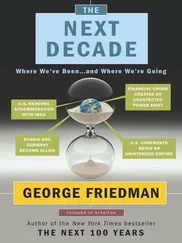The Fit with Other Veterans Studies
Our findings about the detrimental long-term effects of combat have been confirmed by other studies. The most analogous research project is Dr. George Vaillant’s study of the lives of Harvard College men, which began in 1937 when they were sophomores. More than three-quarters of these men served in World War II. Like the Terman men, they varied quite a bit in how much combat they saw. Vaillant found that the men who faced intense hostilities were much more likely to face chronic diseases later. And like the Terman men and women, these traumatized veterans were much more likely to die at a younger age. Finally, Vaillant found that those who were the most stressed out in war were the most likely to develop symptoms of post-traumatic stress. 96 96 To read more about one of Vaillant’s studies of the effects of World War II experiences, see K. A. Lee, G. E. Vaillant, W. C. Torrey, and G. H. Elder, “A 50-Year Prospective Study of the Psychological Sequelae of World War II Combat,” American Journal of Psychiatry 152 (1995): 516-22.
A comparable study looked at several thousand American men who were army veterans from the Vietnam War era (1965-71). These veterans were interviewed and assessed in the 1980s and then followed for more than fifteen years. 97 97 For the study of Vietnam veterans, see A. C. Phillips, G. D. Batty, C. R. Gale, I. J. Deary, D. Osborn, K. MacIntyre, and D. Carroll, “Generalized Anxiety Disorder, Major Depressive Disorder, and Their Comorbidity as Predictors of All-Cause and Cardiovascular Mortality: The Vietnam Experience Study,” Psychosomatic Medicine 71 (2009): 395-403.
Some had served at least one tour of duty in Vietnam, others had served elsewhere overseas, and still others had served only in the United States. This study, too, found that service in the war zone (Vietnam) raised the risk of postwar early mortality.
But other interesting confirmations appeared as well in the Vietnam veterans study. Those veterans who were not married, drank a lot, smoked, had lower incomes, and generally fit the pattern of someone heading off the healthy path were at higher risk. This was especially true if they suffered post-traumatic stress and were depressed. They were at higher risk not only of dying but also of dying in particular from cardiovascular disease. These American veterans of the war in Vietnam obviously grew up in a different time and faced different challenges than veterans of the Second World War. Yet the pathways to long life were pretty much the same. In fact, even a study of traumatic war experiences of veterans of the American Civil War (1861-65) showed such long-term stress-related effects on health. 98 98 To read more about the Civil War veterans, see J. Pizarro, R. C. Silver, and J. Prause, “Physical and Mental Health Costs of Traumatic War Experiences among Civil War Veterans,” Archives of General Psychiatry 63 (2006): 193-200.
What It Means for You: Guideposts to Health and Long Life
The National World War II Memorial to American soldiers opened in Washington, D.C., in 2004, almost sixty years after the end of the war. Since its opening, many thousands of the veterans have visited the memorial and many others have added their names to the memorial’s online archives. These are veterans who often faced serious stress and yet lived well into their eighties, nineties, and hundreds. What can we learn from them?
Our studies of the Terman participants have shown that the psychological stress of war itself is not necessarily a major health threat. Rather, it is the cascade of unhealthy patterns that sometimes follows. The more severe the stress, the more kinds of adaptation and coping are needed. Those soldiers isolated in far-off lands, seeing the most horrifying of combat scenarios, are at the most risk—and much the worse if they were already prone to unhealthy decisions and traveling a lonely, unhealthy pathway. The drinking, smoking, overeating, sleep disturbances, moodiness, and other signs of chronic stress often appear together and reinforce each other.
However, those individuals who can find meaning in a traumatic experience—such as going to war or facing a terrorist attack—and are able to reestablish a sense of security about the world are usually the ones who return to a healthy pathway. 99 99 For a study of finding meaning after the 9/11 terrorist attacks see J. A. Updegraff, R. C. Silver, and E. A. Holman, “Searching For and Finding Meaning In Collective Trauma: Results from a National Longitudinal Study of the 9/11 Terrorist Attacks,” Journal of Personality and Social Psychology 95, no. 3 (2008): 709-22.
Often this involves working with friends or colleagues to help make things better for others. For example, John teamed with his wartime friends to help provide scholarships to young veterans. On the behavioral side, those who did better were the ones who avoided drowning their sorrows and instead turned to sports, social clubs, and productive hard work.
The very most successful persons, however, are not those who simply react productively in response to stress, but those who put themselves on a better path from the get-go. Those individuals, as John and many of the other long-lived Terman participants demonstrated, are less likely to find themselves in stressful situations in the first place. And if they do encounter traumatic challenges, they are less likely to let the ensuing pressures take control of them; they use their existing tried-and-true means for heading off stress before it can become chronic and debilitating. They are motivated, persistent, and prudent. They take care of themselves, avoiding catastrophizing thoughts and working hard at life’s challenges—even picking the weevils out of their cereal. And most important, they turn to the good social relationships that are the hallmark of their healthy life pathways.
CHAPTER 15
Individual Paths to Health and Long Life
(and Why We Won’t Take Polypills)
Awhile back, we were contacted by the now-adult daughter of a long-lived Terman participant. She wanted to tell us how proud her father was to have been in this unique lifelong study, from the time he was first pulled out of his San Francisco classroom by Dr. Terman in 1921, and for all of his ninety-plus years. This conversation reminded us that we health researchers should not get so caught up in the fascinating findings that we forget about the bigger picture of why we are doing this work in the first place. After all, why conduct so much research on the longevity project unless we can draw some concrete conclusions about ways to improve individual health and longevity? 100 100 We have also met sons and daughters of people who thought they were Terman participants. But they were actually people who had been examined by Dr. Terman in some context but had never been admitted to the special group of 1,528 subjects. These contacts reminded us of all the mistakes and faulty inferences possible in complicated health research. We posted a reminder notice inside our lab door, near the Termanator sign, with our own investigative mantra: Follow the Data!
Polypills: The Joke’s on Us
Back when the new scientific field of health psychology was just getting formally organized as a modern science, those of us interested in this new research used to tell a running joke. It was about polypills. It was clear to us that health was being “overmedicalized.” That is, every human ill, vice, and failing was being turned into a disease to be treated by doctors, usually with pills. And, in turn, it seemed almost every problem was giving rise to its own government agency. There is the National Cancer Institute, the National Institute on Alcohol Abuse and Alcoholism, the National Institute of Mental Health, the National Institute on Drug Abuse, the National Institute on Deafness and Other Communication Disorders, the National Center on Minority Health and Health Disparities, and the National Institute on Aging (which funded a lot of our own research). 101 101 The National Institute on Aging funded much of our published empirical research. This book is an independent report of our interpretations and associated study, prepared on our own time; the findings herein are not intended to represent the views of the National Institute on Aging or any government agency.
There are many, many others. Of course, these are all significant issues, very deserving of scientific study. But don’t they differ on many dimensions that should be distinguished, and don’t they overlap in many ways that should be consolidated? That is, these National Institutes of Health are tremendously productive and well-run organizations, but are such divisions the best way to address health, broadly understood?
Читать дальше











